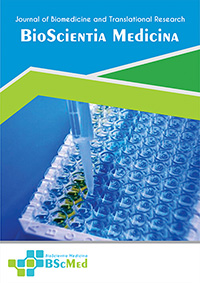Main Article Content
Abstract
Background: Renal fibrosis is the irreversible, final common pathway for all progressive forms of chronic kidney disease (CKD), leading to end-stage renal disease. Its pathogenesis is characterized by the over-activation of pro-fibrotic signaling, chiefly the Transforming Growth Factor-beta (TGF-β)/Smad pathway, and the failure of endogenous cytoprotective mechanisms like the nuclear factor erythroid 2-related factor 2 (Nrf2) antioxidant response. Thymoquinone (TQ), the primary bioactive constituent of Nigella sativa, is a pleiotropic compound with known anti-inflammatory and antioxidant properties. This study was designed to systematically quantify its mechanistic efficacy in modulating the core Nrf2 and TGF-β pathways in established pre-clinical models of renal fibrosis and injury.
Methods: We conducted a systematic review and meta-analysis following PRISMA guidelines. We performed a comprehensive search of major databases (including PubMed and Scopus) for pre-clinical in vivo studies published between 2014 and 2025 that investigated TQ monotherapy or TQ-dominant combination therapy in rodent models of renal injury. The eight studies that met the inclusion criteria utilized diverse models: Unilateral Ureteral Obstruction (UUO), cisplatin-induced nephrotoxicity, gentamicin-induced nephrotoxicity, 5-fluorouracil (5-FU)-induced acute kidney injury (AKI), lipopolysaccharide (LPS)-induced inflammation, carfilzomib (CFZ)-induced renal impairment, and ischemia-reperfusion (IRI). Primary outcomes were the expression of renal Nrf2 and TGF-β1. Secondary outcomes included markers of fibrosis (collagen deposition, histology scores), renal function (BUN, creatinine), oxidative stress (MDA, SOD, GSH, CAT), and inflammation (TNF-α, NF-κB, IL-6, IL-1β). Data were pooled using a random-effects model, and primary analyses were stratified by injury model subgroup.
Results: Thymoquinone treatment resulted in a profound and significant upregulation of the protective Nrf2 pathway (SMD: 2.38; 95% CI [1.05, 3.71]; p < 0.001; 3 studies) and its downstream target Heme Oxygenase-1 (HO-1). Concurrently, TQ treatment markedly suppressed the primary pro-fibrotic driver, TGF-β1 (SMD: -2.09; 95% CI [-2.99, -1.19]; p < 0.001; 2 studies). This pivotal dual modulation translated into significant functional and structural improvements. TQ robustly attenuated renal fibrosis scores (SMD: -1.89; 95% CI [-2.55, -1.23]; p < 0.001; 2 studies). Stratified subgroup analysis showed TQ significantly improved renal function in both chemotoxic AKI models (BUN SMD: -2.31; 95% CI [-3.22, -1.40]) and chronic obstructive/fibrosis models (BUN SMD: -1.17; 95% CI [-1.75, -0.59]). This functional protection was underpinned by potent, broad-spectrum reversal of oxidative stress and inflammation across all subgroups.
Conclusion: Thymoquinone consistently ameliorates renal injury and fibrosis across a wide spectrum of pre-clinical models. Its mechanism of action is multifaceted, critically involving the dual modulation of opposing pro-fibrotic and protective pathways: it suppresses the TGF-β1 cascade while simultaneously activating and restoring the Nrf2 antioxidant response. This body of evidence strongly supports Thymoquinone as a high-potential candidate for translational research and development as a novel, network-targeting therapy for human renal fibrosis.
Keywords
Article Details
As our aim is to disseminate original research article, hence the publishing right is a necessary one. The publishing right is needed in order to reach the agreement between the author and publisher. As the journal is fully open access, the authors will sign an exclusive license agreement.
The authors have the right to:
- Share their article in the same ways permitted to third parties under the relevant user license.
- Retain copyright, patent, trademark and other intellectual property rights including research data.
- Proper attribution and credit for the published work.
For the open access article, the publisher is granted to the following right.
- The non-exclusive right to publish the article and grant right to others.
- For the published article, the publisher applied for the Creative Commons Attribution-NonCommercial-ShareAlike 4.0 International License.





